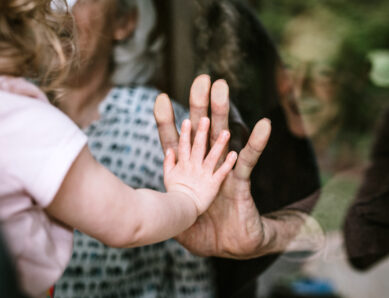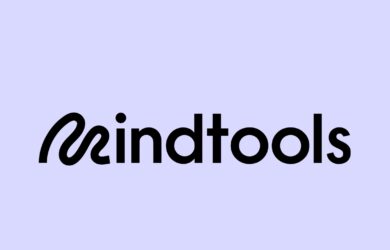If we accept that the theory around Six Degrees of Separation is accurate, then we are only six steps away from a relationship with someone, anyone, throughout the entire world.
Hungarian Frigyes Karinthy wrote about this phenomenon long before the invention of the internet, in his 1929 short story, “Chains.” But the Six Handshake Rule, as it’s also known, still holds true today.
So, if we are so well connected, why do we have so many challenges when it comes to communication, understanding and diversity? Even connecting with ourselves has become problematic.
I have a service dog. Her name is Jackie. Jackie has been trained to perform specific tasks to help me when I’m struggling with my health or struggling mentally.
But the process did not and does not begin in a training class. The process begins with me connecting with her emotionally, mentally and physically.
She has had to learn to trust me for us to achieve a mutual state of respect. For us to care for, and about, one another. You can’t train that.
Connectedness, Normality and Balance
Her training has built upon the connectedness we have developed, so that she understands what a normal state for me is. And she understands when I am moving outside that realm of normalness.
When she identifies a state of abnormality, Jackie uses her training to respond. That is where she believes our strengths lie – in a state of normality.
“Every problem emerges from the false belief we are separate from one another, and every answer emerges from the realization we are not.”
Marianne Williamson, American author
When we connect with others and with ourselves, we generate our own state of normality. And when we find ourselves in situations that challenge that normality, we try to move away from the imbalance and move toward a “normal” balance again. Our brains and bodies feel most comfortable and least threatened when that balance exists.
The Root of Connectedness
Human beings are connected by more than mere survival instincts: we also share a need to belong. Once we no longer belong, we feel hopeless and alone. We seek purpose in life but have no means to establish it.
Learning to understand, for example, the difference between kindness and being patronizing, or the power of language to divide, can change the way we connect with others and the way others connect with us.
We often establish false “connections,” whereby someone or some group appears to embrace us, but it is not a true state of connection. It is a state that is created only to pacify, to calm, and for a temporary connection.
True connectedness allows us to feel connected whether the object of that connection is present or not.
Building Connectedness
During the #MTtalk Twitter chat last Friday, we talked about building connectedness. Here are the questions we asked and some of your most insightful responses:
Q1. What does connectedness mean to you?
@Engage_Leaders Reaching a deep understanding and respect with a person or group.
@SanabriaJav It’s not a word I use much, but it invokes a sense of community, or belonging.
Q2. How do you know whether you’re connected?
@ColfaxInsurance If seeing something or hearing something makes you automatically think of a person (and they do the same with you), you’re chatting frequently, you don’t hesitate to reach out to them.
@emapirciu I know I’m connected when something random makes me think about a certain person/group/entity, and I feel like sharing the experience with them.
Q3. How does connectedness contribute to our well-being?
@SizweMoyo You’re less stressed and it’s less of a drag to work when you are being seen by your team. It makes us feel good and wanted, and this is good for our well-being.
@Yolande_MT We are not hardwired for working/living in silos. Connectedness helps us cooperate and think better.
Q4. How much choice/power do you have around your level of connectedness?
@SustainedLeader While we all encounter situations that take us out of our comfort zones, generally it is a choice. For example, some work in areas with great public interaction, others less so. We seek our own connectedness level.
@MicheleDD_MT It is our choice to make. Do we let people in to get to know us? Do we listen with empathy with others?
Q5. What are the risks of not being connected?
@PmTwee Fundamentally being connected is [a] human thing. Can’t imagine the risk of not being human.
@Midgie_MT Risks include believing our own (sometimes irrational) thoughts. Others can provide a sounding board or help reframe things.
Q6. Why do connections fade/break?
@katwife Lack of attention. Tending to the relationship or connection takes a back seat. It’s not top priority. Lack of perceived value in the connection.
@carriemaslen Connections can break instantly when we lose trust or respect. Connections can break over time when life moves us in different directions.
Q7. Who do you choose not to connect with and why?
@HloniphileDlam7 Anyone who has no respect for others or even for nature. You can’t respect me and fail to respect others.
@MikeBarzacchini I don’t know if it’s a conscious choice, but I’m sure I’ve let connections drift and fray simply because the other person(s) didn’t want to connect, or they had motivations to connect that I may have perceived as counterproductive.
Q8. How does connection benefit us at work?
@J_Stephens_CPA Even when we row the boat in the same direction, there is a difference in how we are connected. A rowing team practices to be faster and better. But slave galleys chained the rowers together. Treating each other with that respect is so important.
@umieshwar When we are connected problems are solved faster, stress is managed better, more creative solutions are presented, the feeling of fulfilment grows, we work efficiently, mistakes are corrected in the beginning, the trust grows, the team learns faster.
Q9. Who do you choose to connect with and why?
@lg217 Me personally, I choose to connect with those I feel give me good vibes because I feel that all of us can benefit with each other in some way, but it is always best to connect with those who would take the time to connect with you and not someone to use you.
@ZalkaB I tend to gravitate towards like-minded people, and also people who inspire me, who are open, kind, giving and are always looking to connect w/others for different purposes. People who see/hear/accept/value others for no “ulterior” motives.
Q10. How can we grow our connectedness?
@MarkC_Avgi Listen & observe. Pause. Think to understand not only your view on things but the view of others. Be open-minded. If you decide you want to be connected, make the first move/gesture & reach out. Give the connection a valid/genuine “effort.” Do not be fooled.
@Tanjiskas By sharing and being vulnerable. Showing our true self to the other, through honesty and just listening to what the other has to say without judgment and respecting the opinion that your teammate has. Being there for each other.
To read all the tweets, have a look at the Wakelet collection of this chat here.
Coming Up
Building connectedness is more than just building relationships with others. It’s also about building strong and resilient communities.
Next week we’re going to talk about building communities, and in our Twitter poll this week, we’d like to know where you most frequently experience a strong sense of community. To see the poll and cast your vote, please click here.
Building Community Resources
In the meantime, here are some resources that explore ways to build strong communities. (Some of these may only be available in full to members of the Mind Tools Club.)
How to Make “High-Quality Connections”
Blanchard’s ABCD Model of Trust
8 Ways to Beat Loneliness in the Workplace



